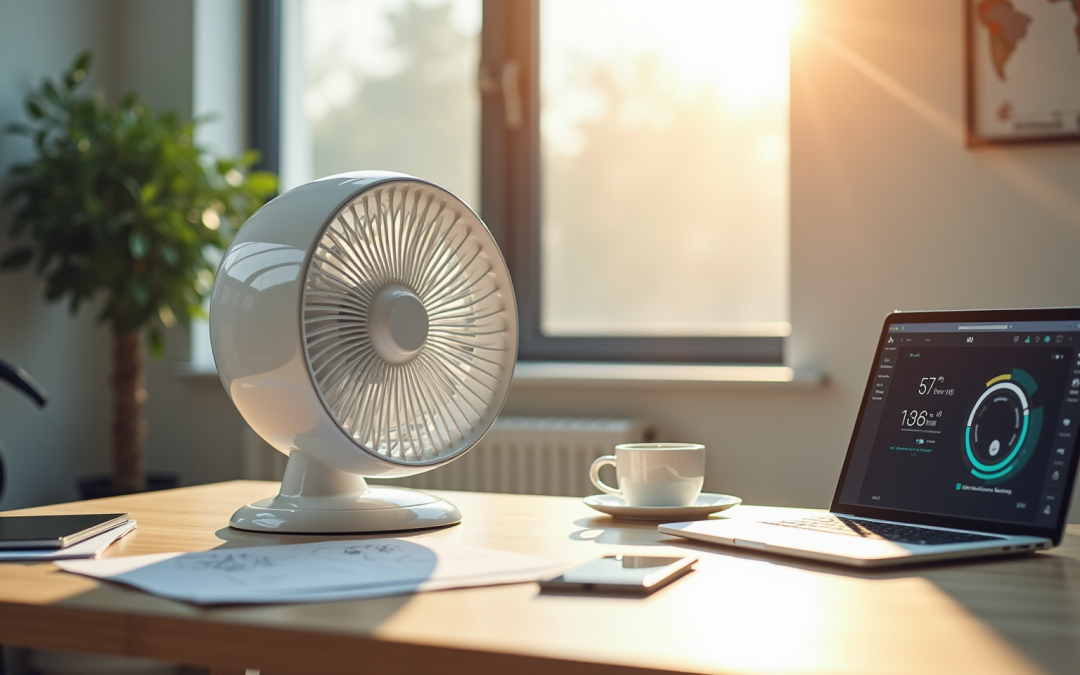Overview
The article delineates ten pivotal advantages of direct current (DC) fans for electronics engineers, underscoring their energy efficiency, quiet operation, and adaptability across diverse applications. These benefits are substantiated by compelling evidence, including substantial power savings of up to 70% when compared to alternating current (AC) fans. Furthermore, the capacity for DC fans to operate silently in sensitive environments positions them as an optimal choice for contemporary electronic systems. This combination of efficiency and versatility not only addresses the growing demands for sustainable solutions but also enhances the functionality of modern devices.
Introduction
The evolution of cooling technology has positioned direct current (DC) fans at the forefront, particularly within the electronics engineering sector. These fans not only promise energy efficiency but also deliver a multitude of benefits that can significantly enhance the performance and reliability of electronic systems.
As engineers increasingly embrace these advanced solutions, a critical question emerges: what precisely renders DC fans the superior choice compared to traditional alternating current (AC) models?
This article explores ten compelling advantages of DC fans, examining how they can revolutionize design practices and operational efficiencies in the dynamic landscape of electronics.
Gagner-Toomey Associates: Leading Provider of Direct Current Fan Solutions
Gagner-Toomey Associates stands out as a leading supplier of , specializing in innovative specifically designed for the electronics sector. This company showcases a diverse portfolio of manufacturers, ensuring that engineers have access to that significantly enhance performance and efficiency across various applications. Notably, over 70% of electronics engineers are now integrating into their designs, reflecting a growing trend towards .
Gagner-Toomey’s unwavering commitment to is evident through testimonials that highlight high levels of satisfaction regarding the durability and effectiveness of their . Their emphasis on exceptional customer service and technical support further solidifies their reputation as a trusted partner for engineers seeking reliable and .
Recent advancements in direct current fan systems, which include improved airflow management and lower noise levels, exemplify Gagner-Toomey’s dedication to offering of the electronics sector.

Energy Efficiency: How DC Fans Reduce Power Consumption
DC enthusiasts exemplify outstanding , with consumption levels that can be reduced by as much as 70% compared to conventional AC units. This significant reduction is primarily attributed to their sophisticated brushless motor system, which minimizes power loss while enhancing airflow. For example, a 25-watt DC fan can deliver the same output as a 100-watt AC unit, clearly showcasing the superior efficiency of DC systems. Furthermore, DC enthusiasts typically consume only 20-30 watts, in contrast to 60-75 watts for their AC counterparts, underscoring their potential for . Notably, , reinforcing the argument for choosing DC technology.
In practical applications, direct current fans demonstrate remarkable longevity and reliability. A notable case is a system installed in Southeast Asia that operated flawlessly for over ten years, highlighting the resilience of these devices in challenging conditions. Additionally, have an , further emphasizing their durability. The integration of advanced technologies in many contemporary enhances their performance, enabling or voice commands, thereby optimizing power consumption.
Experts agree that the not only lower operational costs but also contribute to a more sustainable environment. By reducing electricity consumption, these devices help decrease carbon emissions, making them an eco-friendly choice for various applications, including telecommunications and consumer electronics. Moreover, DC enthusiasts often provide additional speed options, typically offering 6-7 speeds compared to the standard 3-4 speeds of AC devices, which enhances their versatility. As the demand for continues to rise, DC devices are poised to play a crucial role in fostering sustainable practices within the electronics sector.
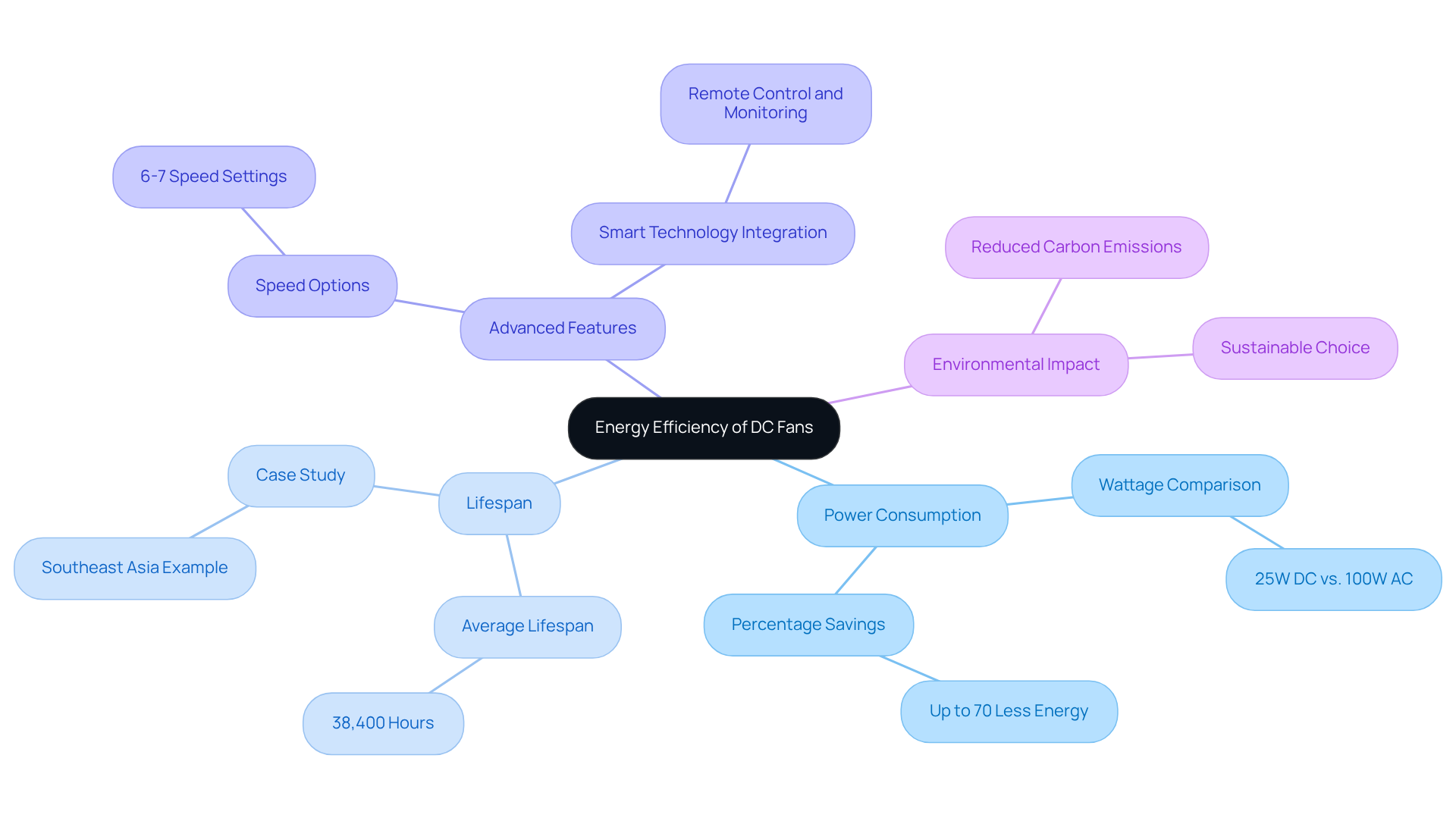
Quiet Operation: The Noise Reduction Benefits of DC Fans
DC enthusiasts stand out for their exceptionally silent performance, a significant advantage over conventional AC units, which often produce considerable noise due to their motor configuration. Indeed, DC enthusiasts operate 50% quieter than their AC counterparts, attributed to , such as the implementation of brushless DC motors. This characteristic renders them particularly suitable for , including medical devices and audio equipment.
In healthcare settings, the for both patients and staff. Likewise, in audio equipment, the . Statistics reveal that by up to 50%, thereby enhancing user comfort and satisfaction.
as it aligns with the growing demand for quieter, more efficient temperature regulation solutions across various applications. As , ‘Direct current fan devices operate at a in settings where noise reduction is essential.’
Furthermore, compared to AC units, solidifying their status as the preferred choice among professionals in the field.
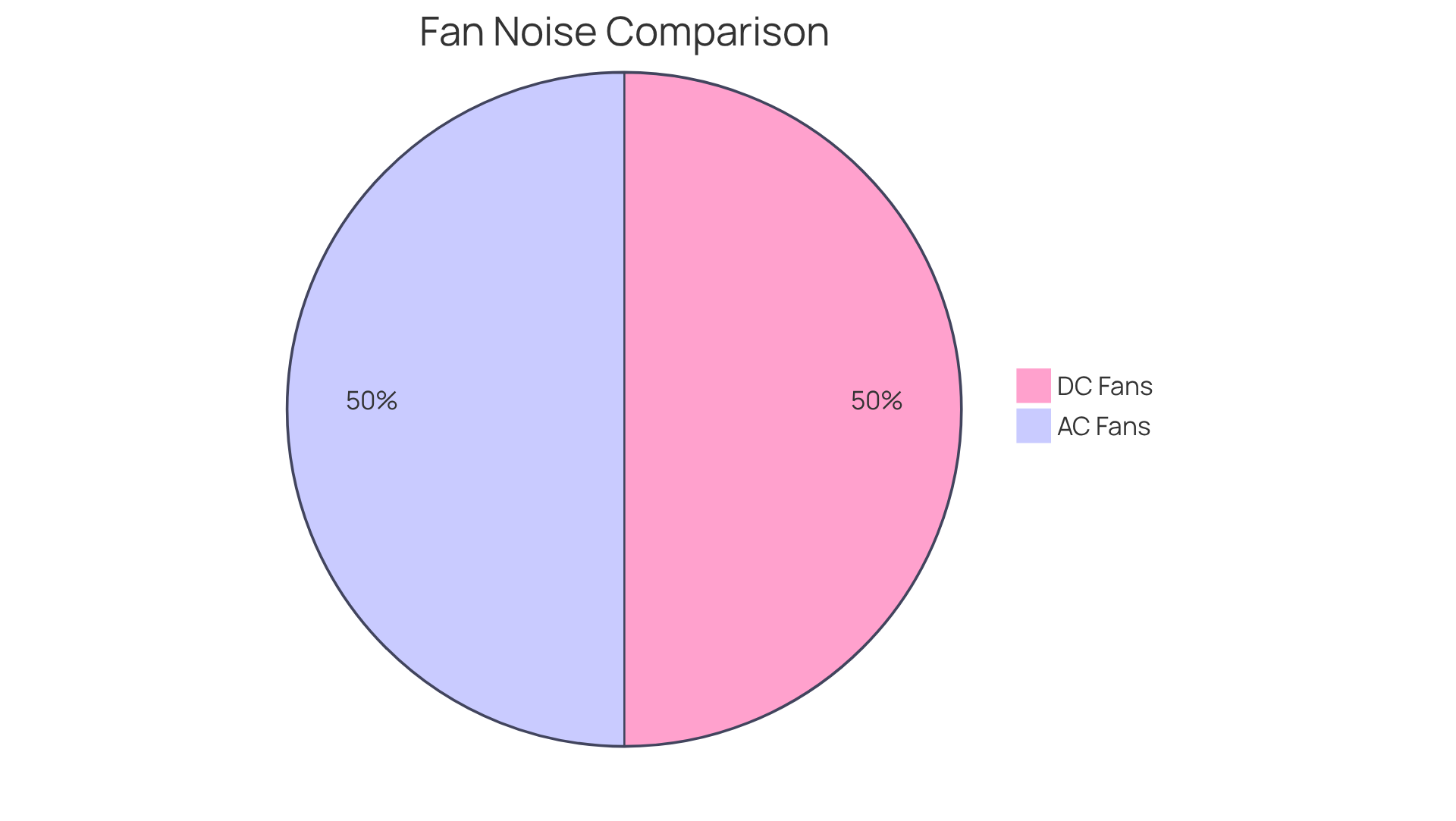
Versatile Applications: Where DC Fans Excel in Cooling Solutions
DC enthusiasts demonstrate remarkable adaptability, finding applications across diverse fields such as computer temperature regulation, HVAC systems, automotive ventilation, and industrial machinery, often utilizing . Their make the direct current fan particularly well-suited for , where size and performance are critical.
Looking ahead to 2025, the is projected to surge, with the and a compound annual growth rate (CAGR) of 3.95% from 2025 to 2034. Moreover, the integration of direct current fans into is increasingly prevalent, enhancing both functionality and user control.
This trend signifies a broader transition towards intelligent and that address the evolving demands of modern technology. Additionally, the competitive pressure on fan manufacturers is intensifying due to the shift towards liquid cooling in , underscoring the dynamic landscape of the market.
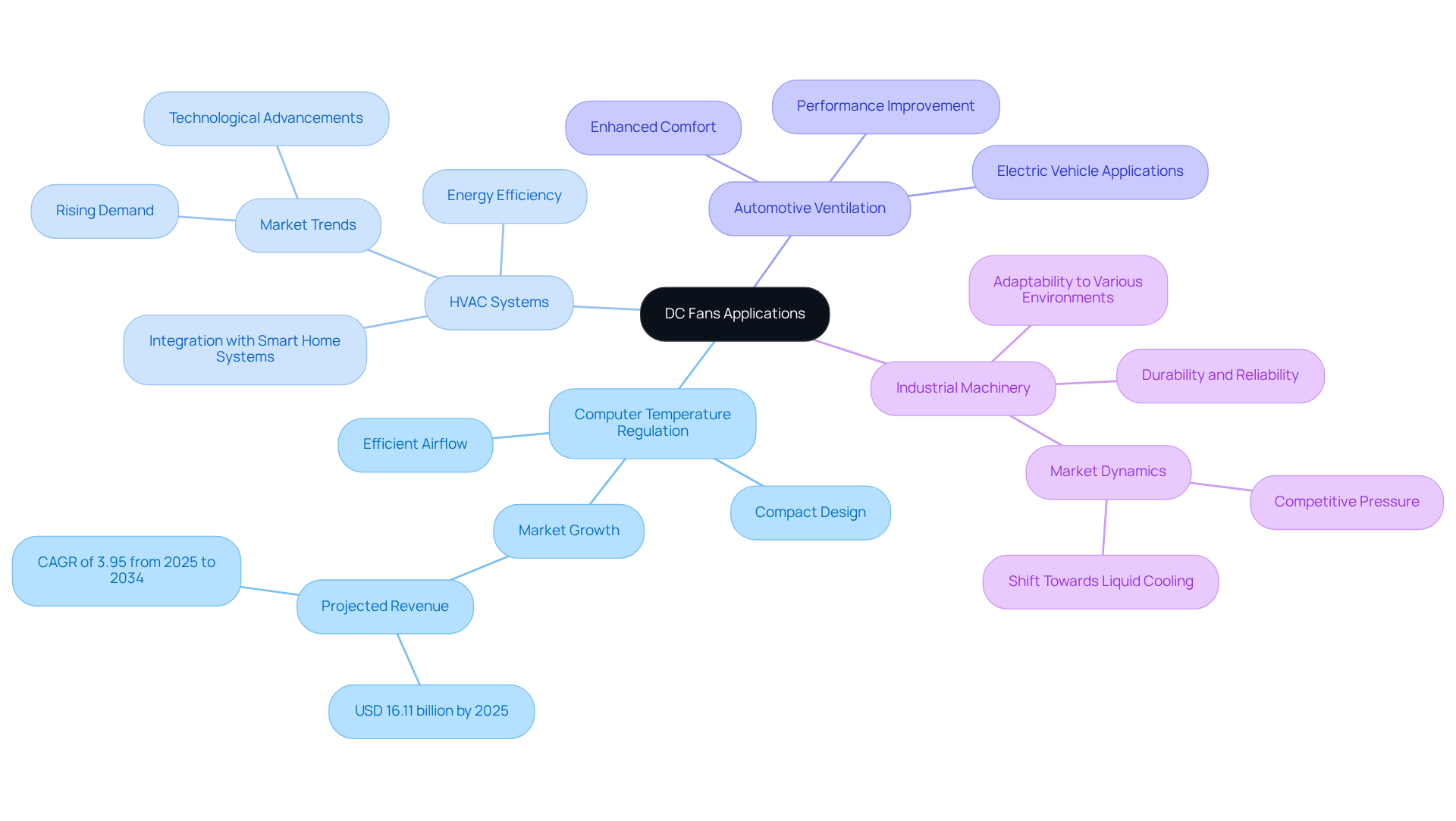
Durability: The Resilience of DC Fans in Challenging Conditions
DC enthusiasts are engineered to excel in challenging environments, making them a dependable choice for a variety of applications. Their construction employs high-quality materials that offer exceptional resistance to corrosion, moisture, and dust—essential factors for sustaining performance in .
In industrial settings, where machinery is often subjected to extreme temperatures and contaminants, the durability of takes on even greater importance. These devices are capable of from -40°C to 85°C, ensuring consistent cooling performance. Notably, boast an average lifespan of 50,000-70,000 hours, underscoring their .
, including lubrication and inspection, is vital for extending the operational life of these devices. By opting for , engineers can secure robust that withstand the rigors of demanding applications, ultimately enhancing the reliability of their systems.
As highlighted, typically have a lifespan of 5 to 15 years with proper care, further reinforcing the significance of quality and maintenance in achieving optimal performance.
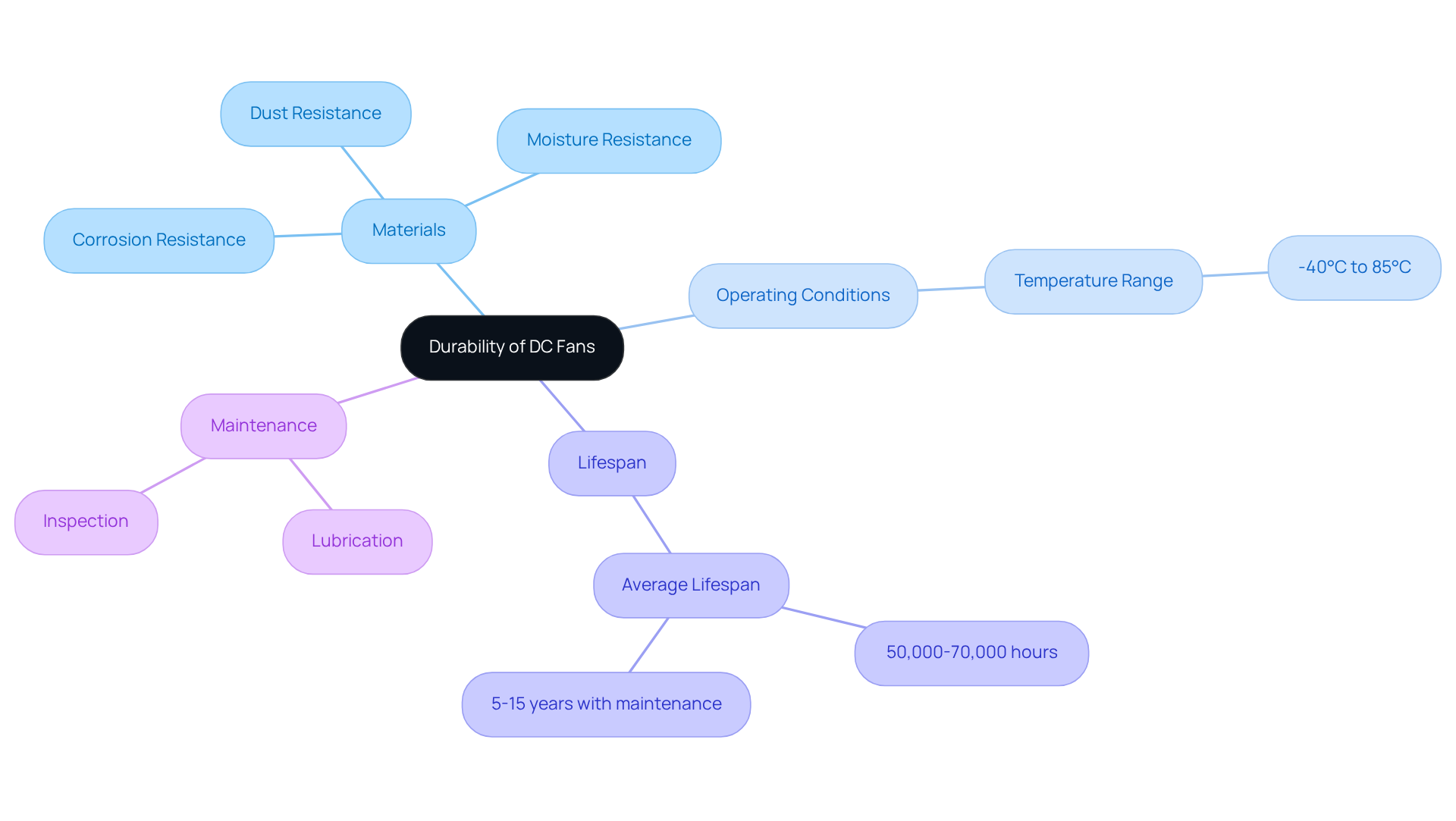
Variable Speed Control: Customizing Airflow with DC Fans
Enthusiasts of the stand out due to their , which allows users to tailor airflow to meet specific temperature requirements. This adaptability not only but also significantly reduces .
For instance, by varying fan speeds, engineers can , making it especially advantageous in environments where precise temperature control is essential, such as data centers and precision manufacturing facilities. The ability to operate at rates as low as 10% of full capacity facilitates optimal airflow management, leading to savings of up to 30% compared to traditional systems.
Furthermore, expert insights highlight that this not only enhances system reliability but also extends the lifespan of , positioning the direct current fan as a vital choice for modern electronic applications.
Additionally, DC units consume approximately $3 in electricity, in contrast to $10 for AC units, underscoring the of . Moreover, DC enthusiasts can achieve compared to their AC counterparts, further enhancing their appeal in noise-sensitive environments.
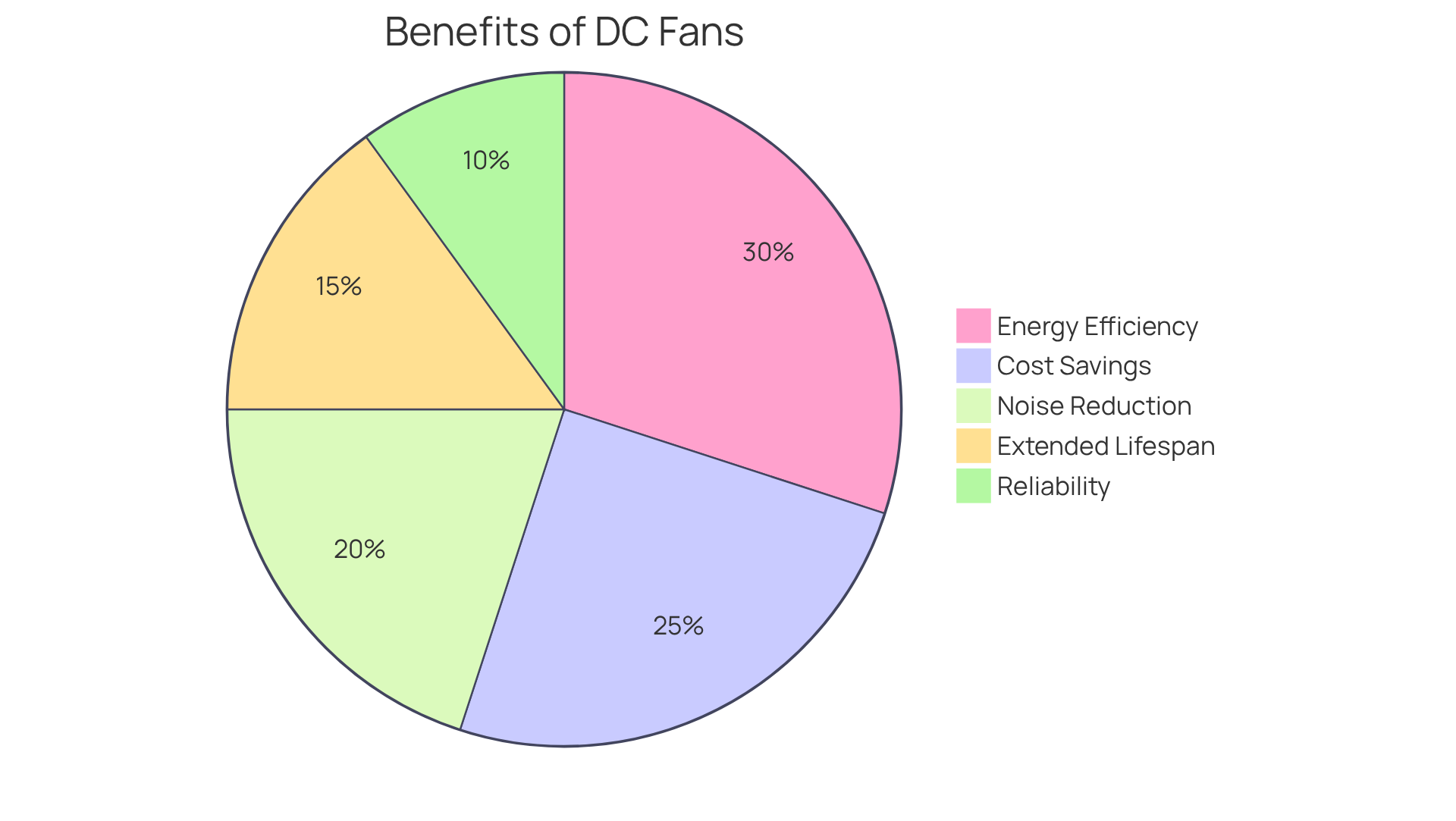
DC vs. AC Fans: Why Direct Current is the Superior Choice
In comparing DC models with their AC counterparts, several notable advantages of DC devices emerge. First and foremost, DC enthusiasts exhibit remarkable , consuming up to 70% less power while delivering equivalent airflow. This efficiency results in , particularly in settings where energy consumption is paramount. For example, a 25-watt DC fan can match the performance of a 100-watt AC fan, highlighting the impressive power reduction.
Additionally, DC enthusiasts operate at , achieving sound reductions of up to 15%. This makes them particularly suitable for sensitive applications such as medical instruments and telecommunications, where quiet operation is critical. Their , facilitated by Pulse Width Modulation (PWM), enable precise adjustments, allowing engineers to effectively manage temperature in dynamic environments.
Another compelling advantage of DC enthusiasts is their longevity. With a , thanks to their brushless motor design, they experience less wear and tear compared to conventional AC devices. This durability not only enhances reliability but also diminishes maintenance costs over time.
Moreover, the ecological benefits of energy-saving devices are significant. By lowering power usage, and a , aligning with the growing demand for sustainable technologies. The market for DC cooling devices is projected to reach USD 3.2 billion by 2033, underscoring their increasing importance in the industry.
In summary, the combination of power efficiency, quieter operation, superior speed regulation, and extended lifespan positions aiming to enhance performance and reliability in their electronic systems.

Innovative Technology: The Advancements in DC Fan Design
Recent advancements in have revolutionized performance and efficiency, driven by innovations such as and . These aerodynamic designs significantly enhance airflow while minimizing , allowing devices to operate more quietly and efficiently.
For example, the features a unique blade design that optimizes airflow, thereby contributing to its ENERGY STAR certification and adherence to stringent efficiency standards.
Additionally, the integration of intelligent technologies, exemplified by , enables devices to automatically adjust their speed in response to duct resistance, ensuring optimal airflow across diverse applications.
This adaptability is crucial as the is projected to grow from USD 1.2 billion in 2024 to USD 2.1 billion by 2033, reflecting a CAGR of 7.5%.
Engineers can harness these advancements to create more efficient and reliable , effectively addressing the escalating demands of modern electronics and HVAC systems.
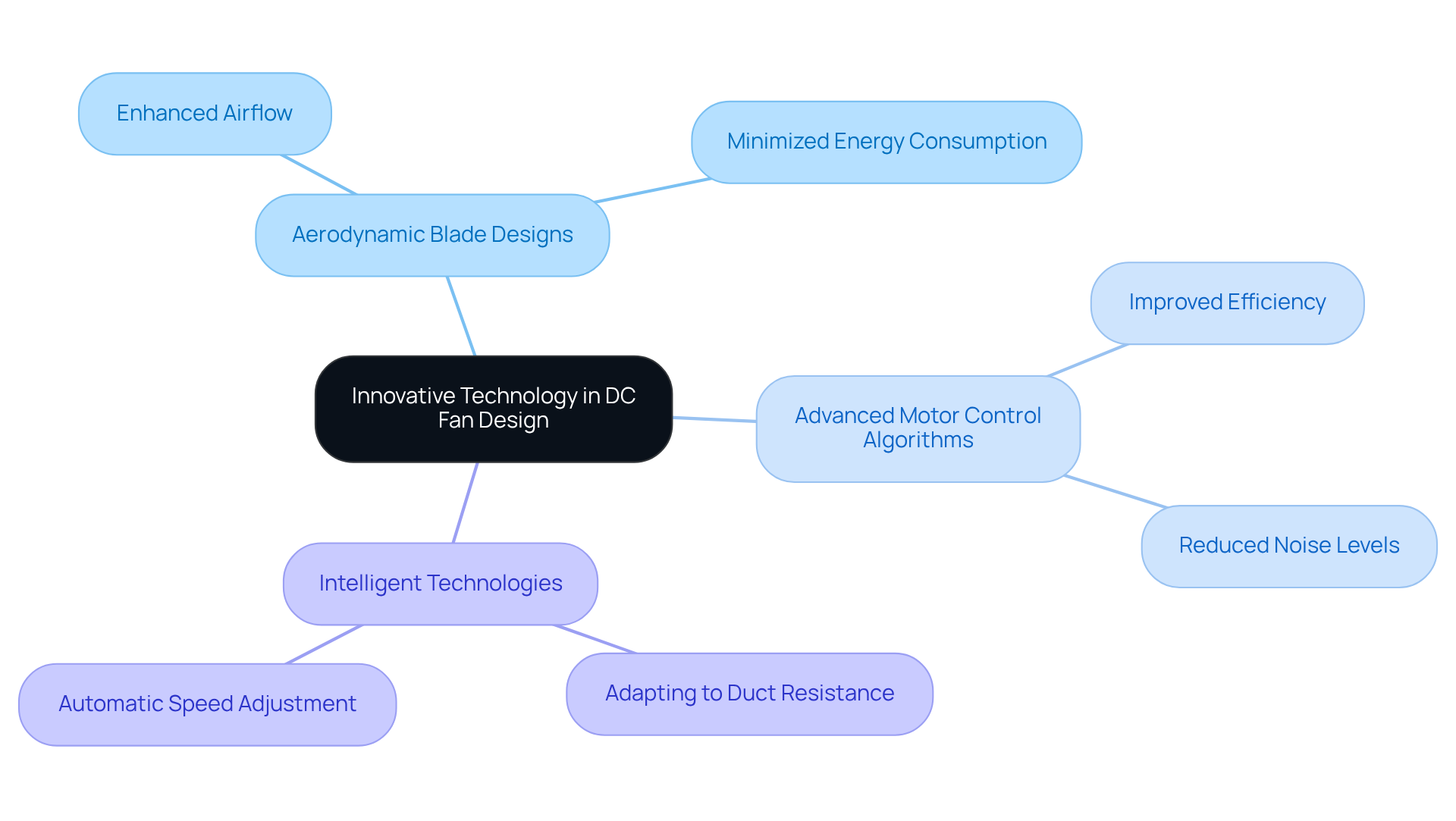
Smart Home Integration: Enhancing Comfort with DC Fans
DC enthusiasts, particularly those focused on , are increasingly becoming essential elements of , significantly enhancing comfort and convenience for users. Equipped with features such as remote control, scheduling, and compatibility with smart assistants, these direct current fans empower users to manage their effortlessly from any location. This smart integration not only elevates the but also drives by optimizing the operation of the direct current fan based on real-time environmental conditions.
For instance, a direct current fan can reduce by up to 70% compared to conventional AC models, showcasing its remarkable efficiency. As engineers design systems that incorporate these , they can create environments that are not only more efficient but also tailored to user preferences, ultimately leading to and sustainability in cooling solutions.
The increasing adoption of smart appliances, including direct current fans, signifies a transition towards , with a considerable segment of consumers now prioritizing these advancements in their home arrangements.
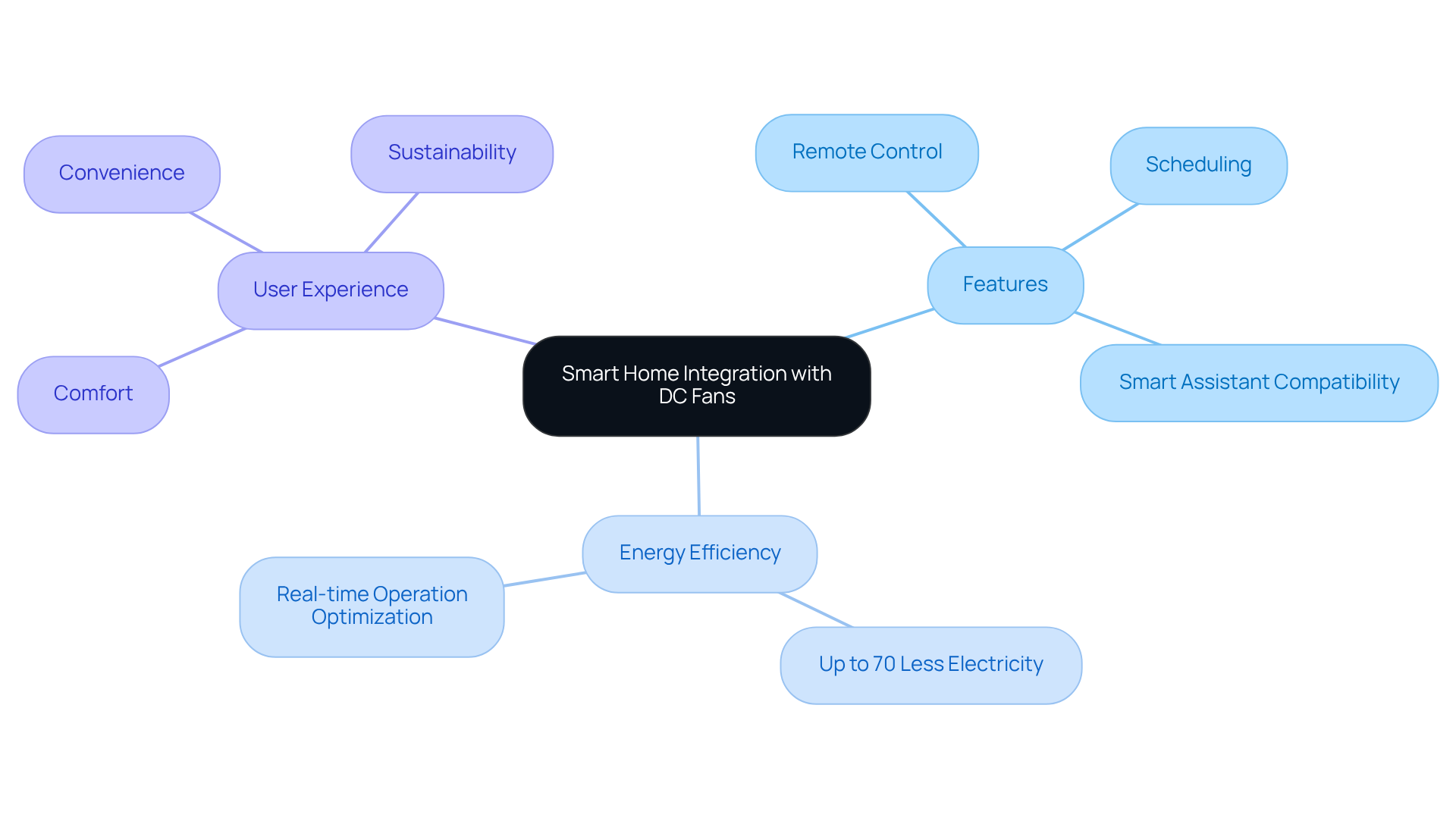
Cost-Effectiveness: The Financial Benefits of Choosing DC Fans
Choosing a can yield significant . Their has the potential to lower electricity expenses by up to 70% compared to conventional alternating current (AC) units, establishing them as a . The durability of DC devices contributes to , as their brushless motor technology minimizes wear and tear.
Furthermore, the enhances performance, enabling users to optimize resource utilization based on specific cooling requirements. This adaptability not only boosts operational efficiency but also aligns with , thereby .
Notably, DC enthusiasts can easily adapt to various AC power types, which helps to mitigate engineering challenges. As we approach 2025, when energy costs are projected to rise, the financial benefits of employing are expected to become increasingly apparent, making their even more attractive.
By investing in direct current fans, engineers can secure a more sustainable and economically viable solution that supports both immediate and long-term financial goals.

Conclusion
Direct current fans present a multitude of advantages that render them an indispensable choice for electronics engineers. Their superior energy efficiency, quiet operation, and adaptability to diverse applications establish them as a pivotal component in contemporary cooling solutions. As the electronics sector evolves, the integration of direct current fans not only enhances performance but also aligns seamlessly with sustainability objectives.
The article highlights several compelling benefits of DC fans:
- Their capability to reduce power consumption by up to 70% compared to traditional AC units.
- Remarkable durability and longevity in challenging environments.
- Advancements in technology—such as variable speed control and smart home integration—significantly enhance their appeal.
These factors empower engineers to optimize both performance and user comfort.
In light of these insights, embracing direct current fan technology transcends mere choice; it represents a strategic move towards energy efficiency and sustainability. As the demand for innovative cooling solutions escalates, electronics engineers are urged to consider the long-term benefits of DC fans, encompassing operational cost savings and environmental impact. Investing in these advanced solutions can yield enhanced performance, reduced energy consumption, and a substantial contribution to a greener future in electronics.
Frequently Asked Questions
What does Gagner-Toomey Associates specialize in?
Gagner-Toomey Associates specializes in providing direct current fan solutions and innovative temperature control technologies specifically designed for the electronics sector.
What percentage of electronics engineers are integrating PWM fans into their designs?
Over 70% of electronics engineers are now integrating PWM fans into their designs, reflecting a trend towards energy-efficient temperature regulation solutions.
How does Gagner-Toomey Associates ensure customer satisfaction?
Gagner-Toomey Associates demonstrates its commitment to customer satisfaction through testimonials highlighting the durability and effectiveness of their high-capacity blowers, along with exceptional customer service and technical support.
What recent advancements have been made in direct current fan systems?
Recent advancements include improved airflow management and lower noise levels, showcasing Gagner-Toomey’s dedication to offering cutting-edge solutions that meet the evolving demands of the electronics sector.
How much can power consumption be reduced by using DC fans compared to AC units?
Power consumption levels can be reduced by as much as 70% when using DC fans compared to conventional AC units.
What is a notable example of the efficiency of DC fans?
A 25-watt DC fan can deliver the same output as a 100-watt AC unit, illustrating the superior efficiency of DC systems.
What is the average lifespan of Gagner-Toomey’s direct current fan units?
Gagner-Toomey’s direct current fan units have an impressive average lifespan of up to 38,400 hours.
How do DC fans contribute to sustainability?
By reducing electricity consumption, DC fans help decrease carbon emissions, making them an eco-friendly choice for various applications, including telecommunications and consumer electronics.
What noise reduction benefits do DC fans offer?
DC fans operate 50% quieter than AC units, making them suitable for sensitive applications like medical devices and audio equipment.
Why are quieter operations important in certain applications?
Quieter operations in healthcare settings foster a more pleasant atmosphere, while in audio equipment, they ensure that sound quality remains uncompromised.

